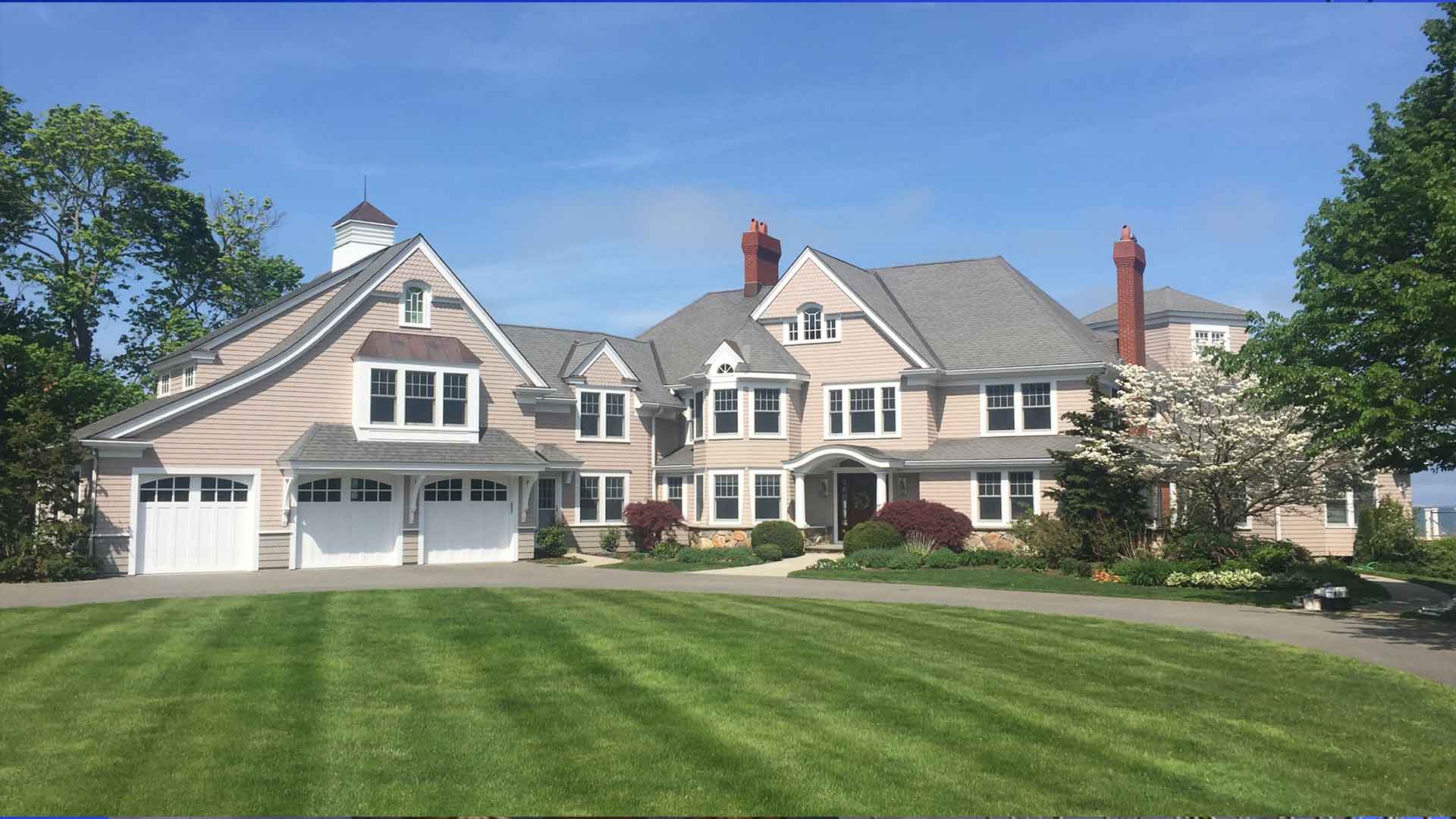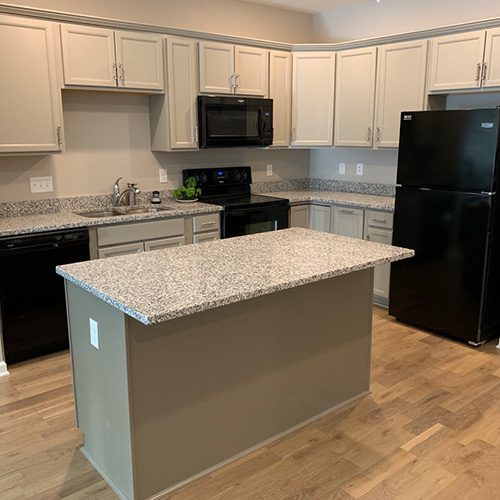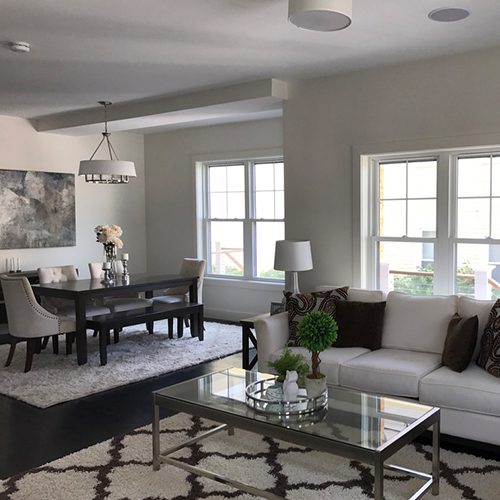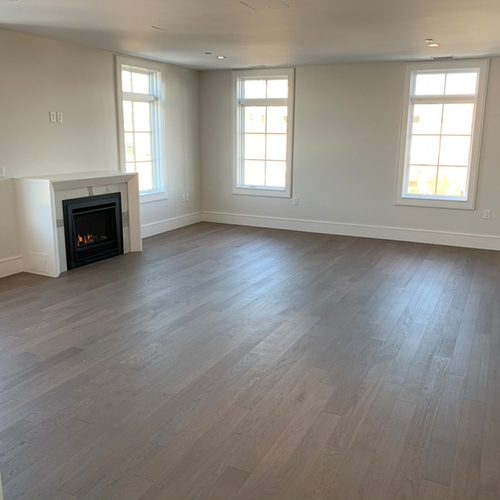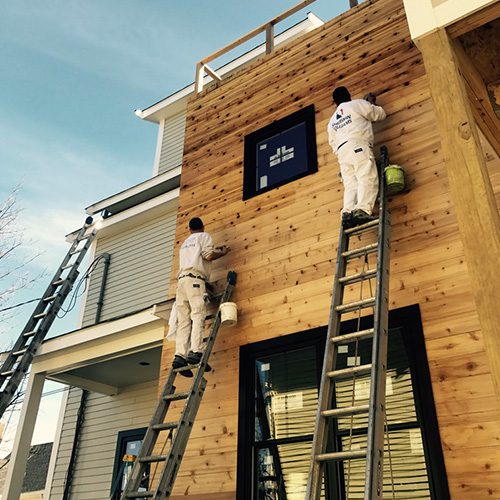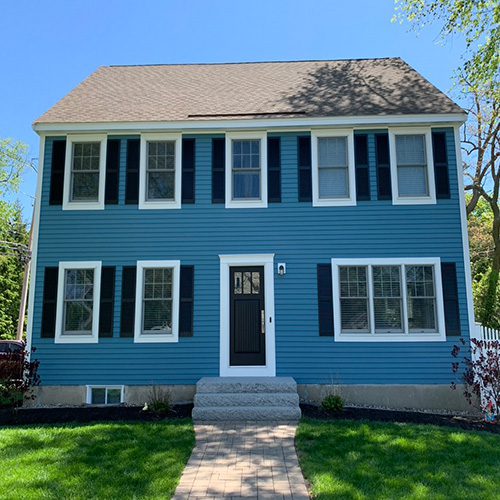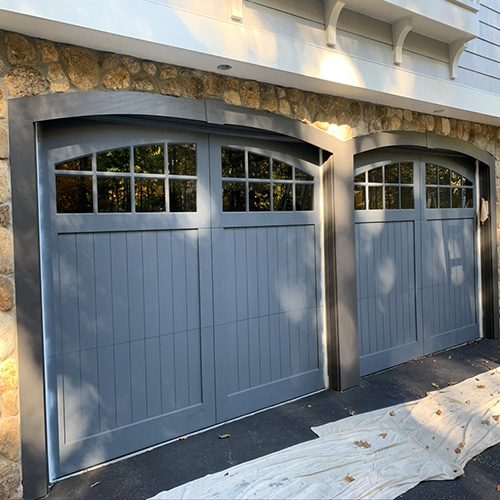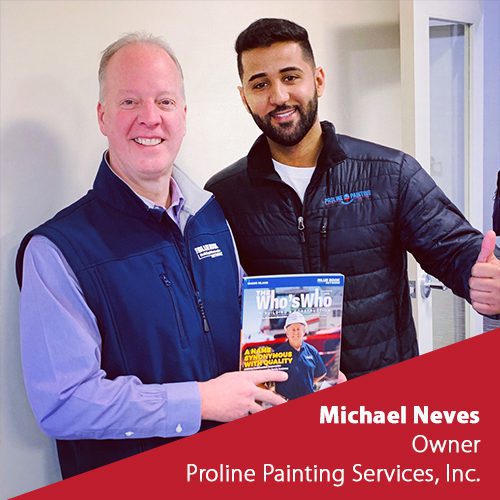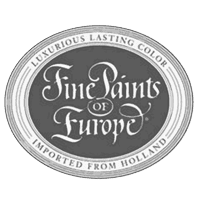Exterior House Painter
South End MA
Looking for an Exterior House Painter in South End, Massachusetts?
Are you a Homeowner? Business Owner? Property Manager? Or maybe someone just looking for more information on the best South End MA exterior house painter?
You’re in the right place…
DO YOU HAVE THESE PROBLEMS:
• Paint Chipping?
• Time for a color change?
• New Home Or Apartment?
Proline Painting Services, a top-rated painter specializing in exterior house painting services, has helped thousands of South End homeowners, business owners, property managers, and other individuals in the Greater Boston, MA area. After some research, we’re confident you’ll find us to be the right exterior house painting contractor to handle your exterior painting project.
Why Choose
Proline Painting Services Is The Best Exterior House Painter South End MA?
In short…Because we have a reputation for quality work and being budget friendly. Our customer service is second to none. Our team is always responsive, courteous, friendly, and respectful.
At Proline Painting Services, we do it all! From conception to completion, we handle every aspect of your painting or restoration project. This integrated approach reduces project time and money by streamlining each phase of implementation and eliminating the delays that often plague sub-contracted projects.
With Proline Painting Services, you’ll receive:
- Quality workmanship that is guaranteed to last
- Work from licensed professionals who are honest and hardworking
- Dependable service that is completed on time and on budget
- Free estimates and a fully insured crew
To review the creativity of our work and the quality of our craftsmanship, simply take a look at our Photo Gallery. Our decades worth of painting projects speak for themselves! From custom commercial projects to house painting, and more — You can trust your project or business property to our team of experts.
Residential & Commercial
Full Service Painting Company
Kitchen Cabinet Refinishing
South End MA
Click Here
Interior House Painter
South End MA
Click Here
South End
Painting Contractor
Click Here
What Are The Benefits of Using Professional House Painters?
When you paint the outside of your home yourself, you risk making mistakes. While a quality paint job increases your home’s curb appeal, a bad one does the opposite. You get these benefits when you hire professional exterior house painters:
Professional Results
A professional paint job adds value to your home and lasts longer than an amateur paint job. Professionals also save you time and money.
Color Advise
With so many exterior house paint colors, it can be hard to pick one. We have experience with painting all types of Massachusetts residences, and we can advise you on the best color and paint type for your budget.
Safety
Painting involves high surfaces and specialized equipment. Our team has the proper training and certifications for exterior painting services. We have everything we need to prevent damage and disruption.
Exterior House Painters Who Emphasizes Preparation for a Magnificent Finish
Prep work comes first in a quality painting project. Before we apply paint to your exterior surface, we:
- Clean the surface with power washing and scraping
- Check to see if the area needs sanding or patching
- Inspect the surface for rot, mold, or other issues
Our thorough process ensures beautiful and lasting results. We inspect the work area first, which may uncover hidden problems. In professional exterior painting services, we know that a solid start is the key to a fantastic finish.
When we complete the job, we check for flakes, debris, and chips. We also clean up the area and leave it the way we found it.
Exterior painting preparation helps everything go smoothly. We plan well and keep you informed so that you can have peace of mind.
What Makes Us Different?
FULLY INSURED
We’re fully insured and bonded to handle all requests.
budget Friendly
We're willing to discuss projects constrained by a budget.
Quick Service
We show up on time and finish ahead of schedule regularly.
Friendly Team
Our crew is pleasant and easy to talk to on the job site.
House Painting Tips
No matter the size of your house, painting it is a big undertaking. These exterior house painting tips will help you get the best result:
- Buy quality tools. While you want to save money, you don’t want a cheap-looking home. Invest in a few synthetic-bristle brushes with different edges. You should also buy a heavy-duty roller, paint cans, and a bucket.
- Watch the weather. If you paint in direct sunlight, the heat will dry your paint too fast. You also don’t want to paint when you have a risk of high winds or rain. Check the paint label to see the recommended environment.
- Check for lead. If you have an old home or building, you may want to get a lead test kit to avoid exposing yourself or others to lead paint.
- Clean the exterior. Dirt and grime will ruin your fresh paint. Use a cleaner that works on mildew or hire a professional power washer.
When you hire us for exterior painting services, we’ll take care of all of these items for you.
How to Choose Exterior House Paint Colors
Your interior colors typically reflect your style. With the outside of your home, you also have to keep in mind:
- Durability
- The colors of your patio or other accents
- Trim color
- Neighborhood
- Climate
When choosing exterior house paint colors, plan to invest in a premium brand that resists stains and weather. If you have brick or stone near your home, try picking one of their underlying tones. You can choose an opposing color instead of a complementary one—for example, a warm color to contrast with a cooler tone.
Try using an online tool that will recommend coordinating or matching colors. These tools help you visualize the finished look with different color combos.
Finally, buy several test paints. Make sure you test colors on different sides of your home to see them in various lightings. Once you see the colors on your home, you can make a better judgment on which one looks best.
Talk to an Expert
We understand that sometimes you just want to talk before scheduling a consultation. Our team will gladly answer any of your questions or help you with any of your concerns.
Call Mike now! — (617) 818-5763
Testimonials From Happy Customers
★★★★★
Top-Rated Painters
Focused On Quality Craftsmanship And Customer Service
Request A Free Quote Today!
We'd be happy to come evaluate your property, discuss your needs, and provide you with a competitive, no-obligation ESTIMATE.
Kitchen Cabinet Refinishing
South End MA
Click Here
Interior House Painter
South End MA
Click Here
South End
Painting Contractor
Click Here
MAP OF South End, MA
[rkfrt-map title=”Map of South End” location=”South End, MA” zoom=”13″ neighborhood=”true” activities=”true”]
South End OVERVIEW
|
|
This article has multiple issues. Please help improve it or discuss these issues on the talk page. (Learn how and when to remove these template messages)
|
|
South End District
|
|
|
U.S. National Register of Historic Places
|
|
  |
|
  Location in Boston
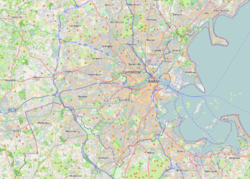  Location in Boston metro area
  Location in Massachusetts
  Location in United States
|
|
| Location | Boston, Massachusetts |
|---|---|
| Architect | Multiple |
| Architectural style | Greek Revival, Late Victorian, Italianate |
| Website | www |
| NRHP reference No. | 73000324 |
| Added to NRHP | May 8, 1973 |
The South End is a neighborhood of Boston, Massachusetts. It is bordered by Back Bay, Chinatown, and Roxbury. It is distinguished from other neighborhoods by its Victorian style houses and the many parks in and around the area. The South End is the largest intact Victorian row house district in the country, as it is made up of over 300 acres. Eleven residential parks are contained within the South End. In 1973, the South End was listed in the National Register of Historic Places. Much of the South End was originally marshlands in Boston’s South Bay. After being filled in, construction of the neighborhood began in 1849.
It is home to many diverse groups, including immigrants, young families, and professionals, and it is very popular with the gay and lesbian community of Boston. Since the 1880s the South End has been characterized by its diversity, with substantial Irish, Jewish, African-American, Puerto Rican (in the San Juan Street area), Chinese, and Greek populations. In 2010, the population was 55.2% white, 13.3% Hispanic, 12.5% Black or African American, 16.2% Asian, and 2.7% other; 55.2% of its residents had a bachelor’s degree or higher; the median household income was $57,699; the median age was 36; 65.6% were primarily English speakers; and 12.9% were primarily Spanish speakers.
The South End has five primary and secondary schools that offer education from kindergarten to grade 12.[citation needed]
ABOUT South End, MA
History
Residential history
As the South End geographically grew from filling in land north and west of “the Neck”, the city of Boston envisioned a large inner city residential neighborhood to relieve the crowded downtown and Beacon Hill neighborhoods. The city also hoped for a large and stable tax base. Architect Charles Bulfinch laid out some of the first filled land. He designed a large residential park called Columbia Square located at the present Franklin and Blackstone Squares. Bulfinch’s plan was to route traffic around the square, not through it. Eventually his plan was abandoned and Washington street was allowed to once more divide the square creating today’s separate squares.
Many rooming houses on the Back Bay side of the South End had no bathing facilities; roomers went to public showers to bathe. Filled land in the South End was originally eight feet above sea level, but is now four feet, as fill settles. The original shore line of Boston Neck crosses in front of 40 St. George Street, and tapers to the narrowest point on the Neck at Dover Street. Blackstone and Franklin Square are solid land on the original neck, but clam and snail shells are just beneath its surface, as high seas would occasionally overrun the Neck. Massive granite blocks of original sea wall can be seen on the Harrison Avenue side of the Joshua Bates School.[citation needed]
A burgeoning middle class moved to the South End including business owners, two mayors, bankers, and industrialists. Though the neighborhood’s status as a wealthy neighborhood was relatively short-lived, myths of a dramatic white flight in the 1880s are not entirely true. A series of national financial panics (see e.g., Panic of 1884, Economic history of the United States), combined with the emergence of new residential housing in Back Bay and Roxbury fed a steady decline of whites of English Protestant ancestry. Whites remained in the neighborhood, but increasingly they were Irish Catholic and recent immigrants.[citation needed]
By the close of the nineteenth century the South End was becoming a tenement district, first attracting new immigrants and, in the 1940s, single gay men. The South End also became a center of black middle class Boston life and culture. The largest concentration of Pullman Porters in the country lived in the South End, mostly between Columbus Avenue and the railroad bed. As the decades progressed, more buildings became tenements and by the 1960s absentee landlordism was rampant and the neighborhood was one of the poorest of the city.[citation needed]
The first settlement houses in Boston were in the South End: the South End House, Haley House, Lincoln House, the Harriet Tubman House, and the Children’s Art Centre. In 1960 these settlement houses merged to form United South End Settlements.
Urban renewal
The South End was one of many large-scale landfill projects in Boston to create new residential districts. Construction started in 1849, it was built on tidal marshes that surrounded Boston Neck. The street plan for the South End was to pattern the 18th-century English models, it would have blocks of townhouses overlook small parks in the centers of the residential streets. The parks were built to make the South End more beautiful and make it feel like a community. These townhouses quickly became the predominant form of housing, builders produced blocks of houses for the middle-class families. From 1850 to 1880, these townhouses started to get built, with the typical townhouse having a mix of architectural styles. The South End also became a popular hospital district with the first being the Boston City Hospital which attracted other hospitals to the area. One of the hospitals that came into the South End was the Massachusetts Homeopathic Hospital that was built in 1875. It used fresh air cures and home remedies to heal their patients but if one of the patients needed surgery they were sent to the Boston University School of Medicine. The Boston University School of Medicine first came into the South End in 1874 accompanied by the New England Female College, which was the first college in the region that accepted women. By the late 19th century the South End was becoming increasingly populated by African Americans who were coming from the South. Even though City Hospital admitted black patients, they didn’t allow them into their training programs or hire black professionals. By 1908 a black physician from Alabama named Dr. Cornelius Garland opened his own hospital called Plymouth Hospital and the Nurse’s Training School. By 1929, Plymouth Hospital closed down because City Hospital started to accept people of color into their medical and nursing programs.
The connection of Boston and Albany, New York by railroad (by some of the various companies that would later merge into the Boston and Albany Railroad) was celebrated in 1841 as a way to keep Boston competitive with New York City as an Atlantic port. Just south of the Boston and Worcester Railroad (where the Massachusetts Turnpike is now) in the next decade arose the New York Streets district, a residential area of the South End where the streets were named after cities on the route to Albany. Albany Street still exists (though it now ends at the Turnpike rather than Kneeland); connecting Albany Street with Harrison Street from north to south were Seneca, Oneida, Oswego, Genesee, Rochester and Troy Streets (Troy became the modern Traveler Street).
THINGS NEAR BY South End
[rkfrt-activities title=”South End, Massachusetts” location=”South End,MA” limit=”9″ sort=”asc”]


